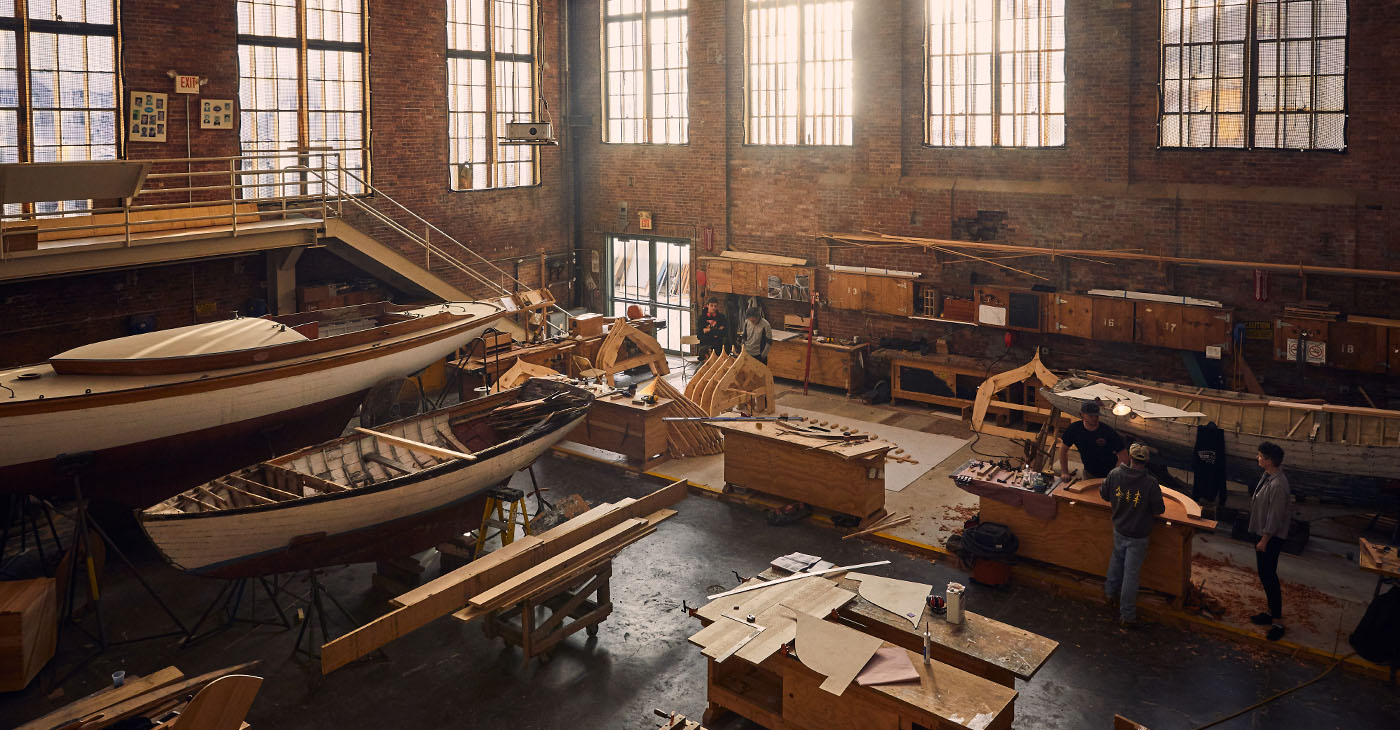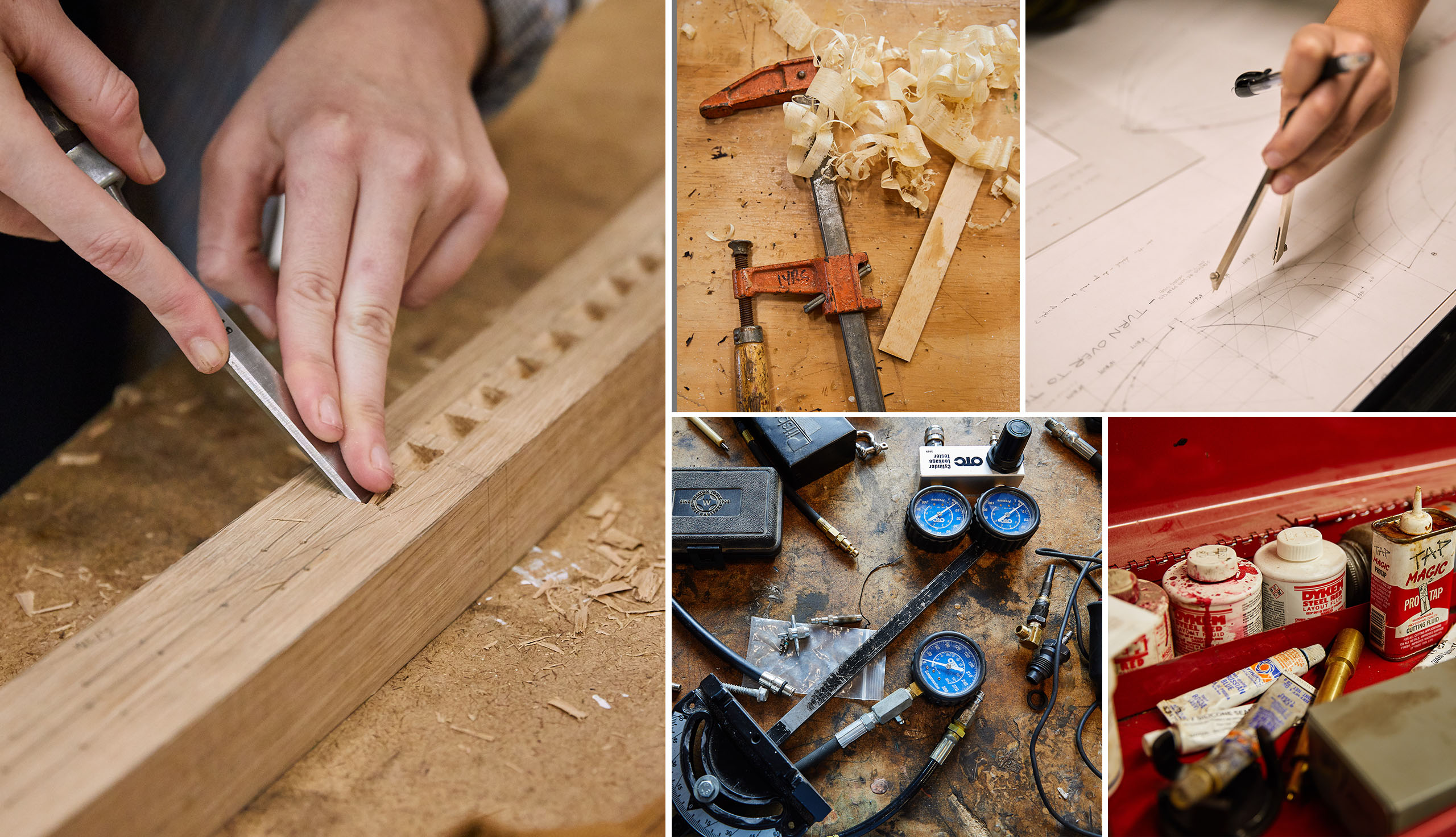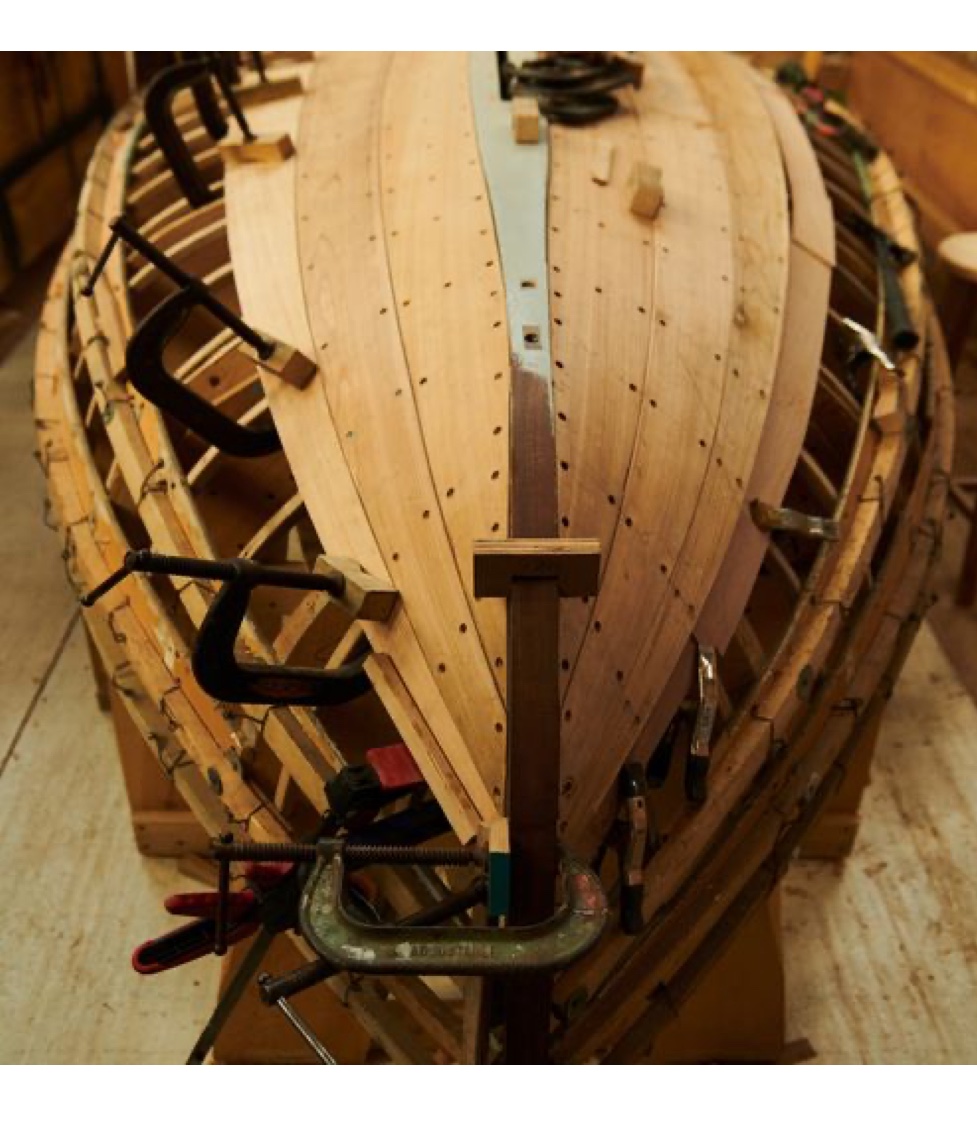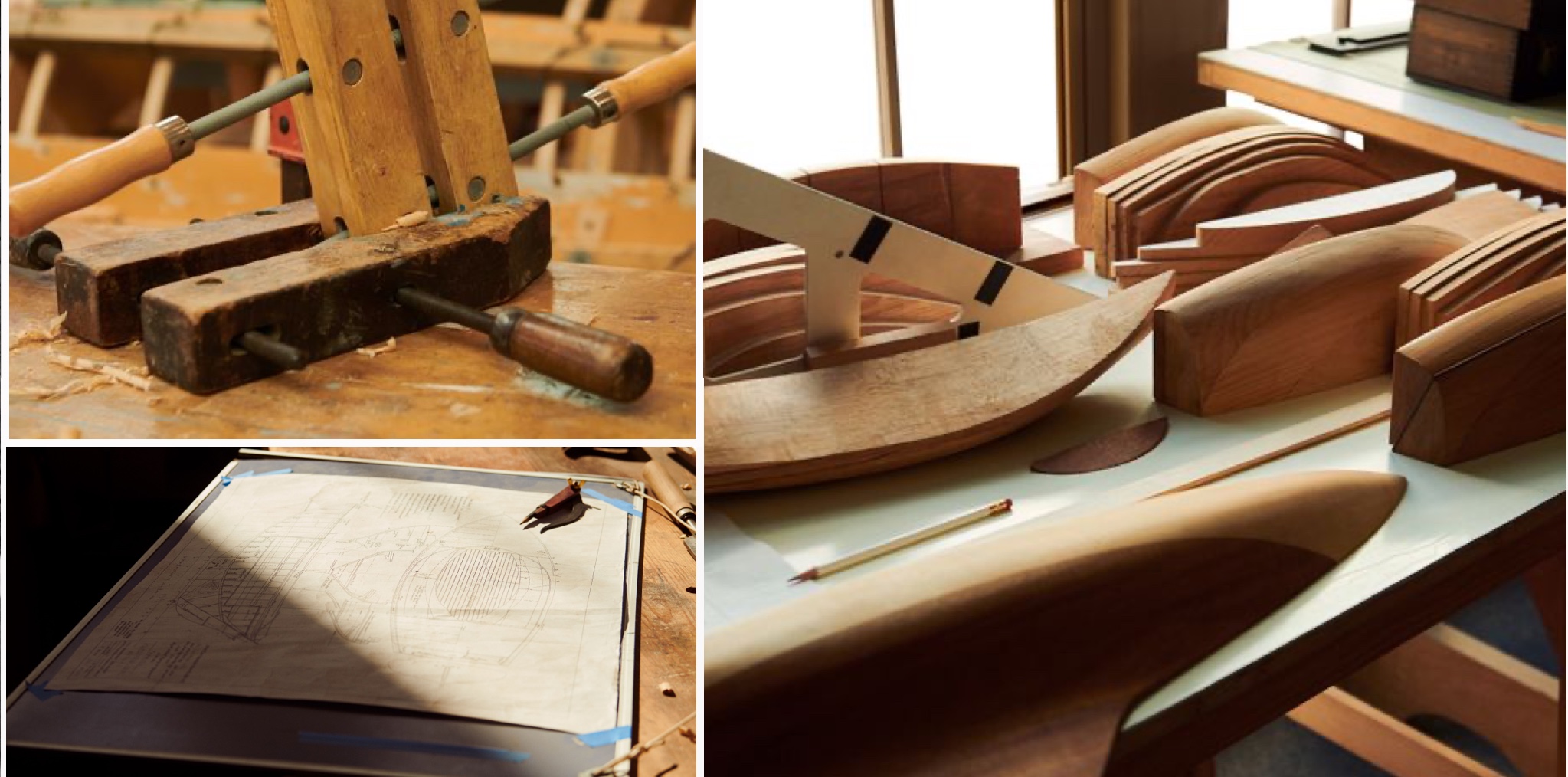
All Hands
on Deck
Mastering the art of building and restoring classic boats at the International Yacht Restoration School in Newport, Rhode Island
It’s an old adage swapped often on the docks: The best two days of any boat owner’s life are the day they acquire it, followed by the day they sell it. With a demanding regimen for upkeep and a moody temperament, even the smallest seafaring vessel can drive a person to the end of their rope. But such is not the case for a select group of students and instructors tucked away in Newport, Rhode Island. Set on three harbor-front acres and fittingly just a few steps from a bustling marina, the International Yacht Restoration School is where even the most weathered, beaten-down ships find new life.
Founded by marine artist John Mecray and philanthropist Elizabeth Meyer in 1993, the school was originally intended for those interested in a strict curriculum focused on wooden sailing yachts. Over its 30 years, the modest student body—a mix of both high school and college graduates, as well as those in search of a second act—has grown to include those who want to cut their teeth in this niche community in hopes of applying their skills to other forms of artistry, from digital modeling to complex electrical systems.

Altogether, the group usually totals no more than 70 craftsmen and women per semester, who take part in a two-year program that demands both technical prowess and an innate love of difficult handiwork. On a typical day on the vast shop floor, the sunbeams interlace with wood shavings and the bang of a hammer echoes through the building’s soaring ceilings still intact from its use as the Newport Steam Factory in the mid-1800s. The school’s senior instructor for boatbuilding and restoration, Warren Barker, a 20-year veteran of the program, guides his apprentices through their second-year projects.
“What I truly like about boats is that initially, we start working on them upside down, and they seem to be just a piece of sculpture,” he muses. A native of Maine, Barker’s love for boats started early, when he and his father built one of their own. Thirty-eight years later, with furniture making, construction, and, naturally, custom boat building under his belt, his fascination remains intact.
“When we roll them up, they seem to transform into a piece of super precious furniture, and then the best thing about it all, is that you take that furniture and chuck it in the water,” he adds. “It takes on a whole different life and a visual aspect that I’ve always thought was fabulous, so I always tell students that, ‘If you get this thing done, you can walk on water.’”
Melissa Conlon, a former film art director, is among the school’s alumni. Like her classmates, she affectionately refers to any boat as if admiring a feminine spirit of the high seas, and after spending a few years on a handful of different schooners, the Rhode Island native came to appreciate them much more. “I love climbing aloft, problem solving, and giving service back to a vessel that seems so very alive in the way she takes care of you when you’re underway,” she explains, employing some requisite sailor jargon. “It wasn’t very long before I wanted to know about the construction—the systems and other various organs of the ship.”

After the romanticism of a striking bow or a billowing sail fades away, the safety goggles are strapped on and a boat is dismantled to reveal its oak frame, an element so fragile yet essential that it’s often equated to a rib cage. Working in groups of three to five for eight hours per day, five days per week on an ailing watercraft (often donated by a nearby resident), the teams get to work resurrecting it from disrepair. During her time at the school, “my team started with a Beetle Cat that was incased in fiberglass, we presume because it was repaired with iron, which inevitably rotted,” Conlon recalls. “We demolished it—preserving what we could out of the structural parts to use as reference—chiseling away all of the fiberglass to expose the plank lines.”
As a seasoned boat maker himself, Barker sees opportunity for a craftsman’s work to shine in the most ramshackle specimens. “The more tired they are, the better for us,” he says. “We want them really beat up, because, by rebuilding the whole thing, you learn, and it’s an opportunity to find out how they were built. Who were these people that built it? What was the idea?”

The process of rehabilitating a boat can be maddening, but it comes with the promise of deeply rewarding results. Over the years, the school has worked on every breed of vessel, from a handsome Ruweida V “R” class sailboat designed by the revered Starling Burgess and dating back to 1926, to J.P. Morgan’s Corsair yacht, built in 1891 and measuring in at 273 feet.
“You always have to consider the bigger picture,” Conlon says of her experience. “You might be working independently on a part of the boat, but you’re pushing the team forward regardless. Every day is different, but you can consistently expect to scratch your head and think about how to make wood do what you want it to.”
The moment of truth arrives each June on the yearly Launch Day coinciding with the IYRS graduation ceremony. Met with late-night shifts in the workshop and many last-minute tweaks, it’s a day of reckoning on the curriculum calendar where friends, family, and local spectators all gather, hold their breath, and watch as the new vessels effortlessly glide forth onto the waves.
- Photographs by Read McKendree







